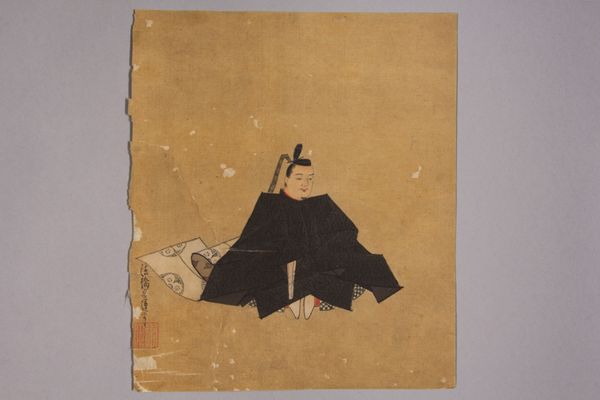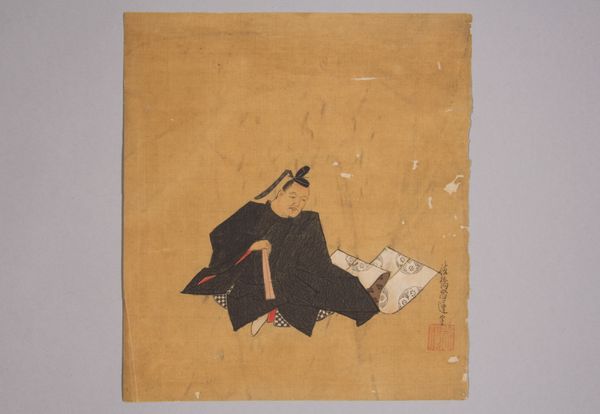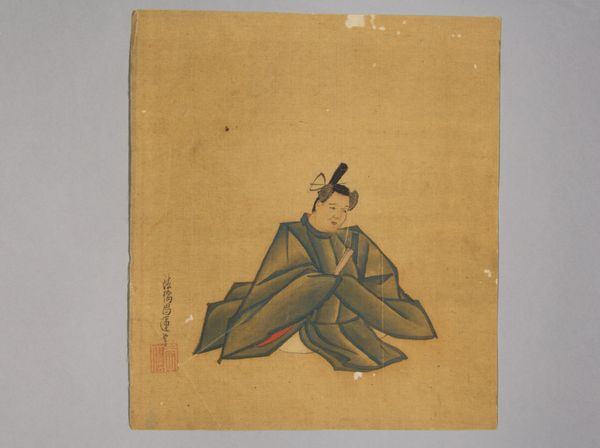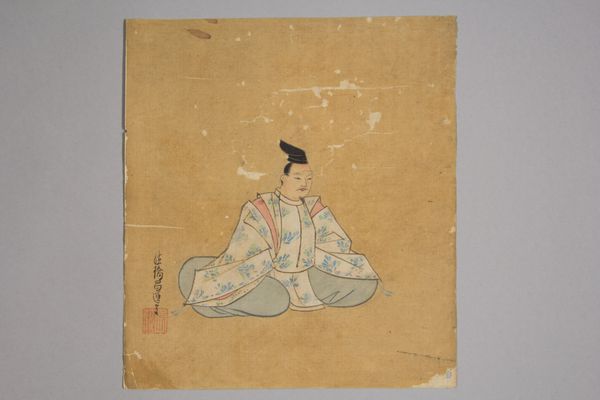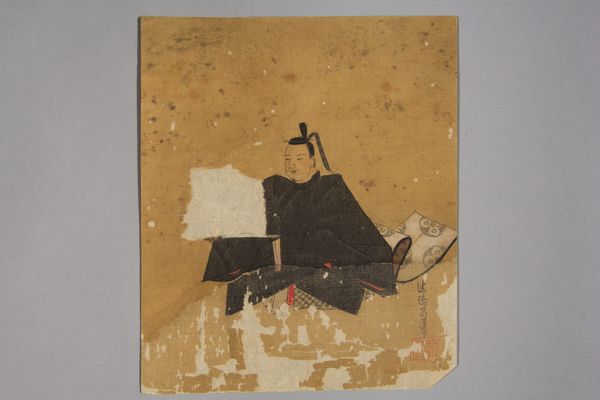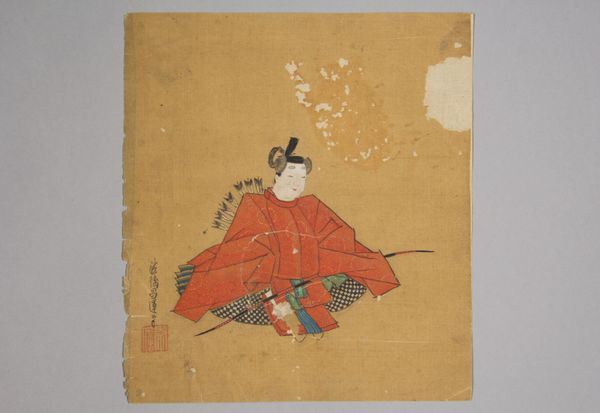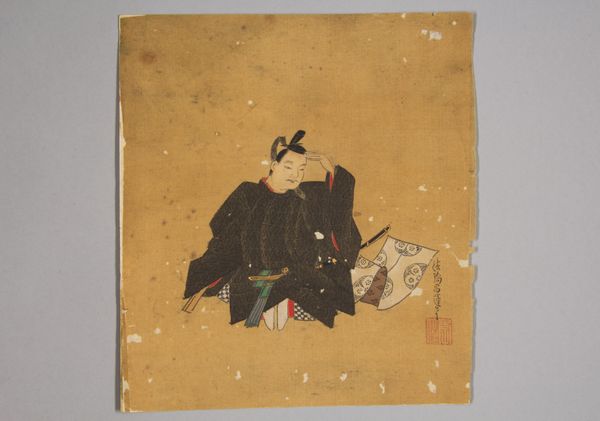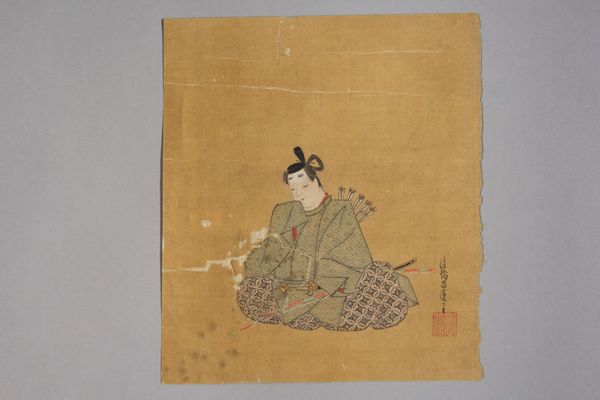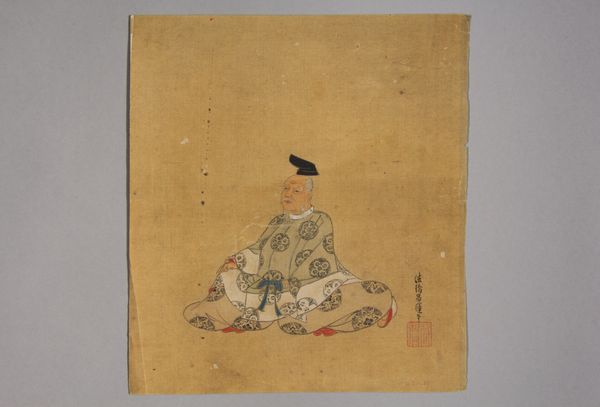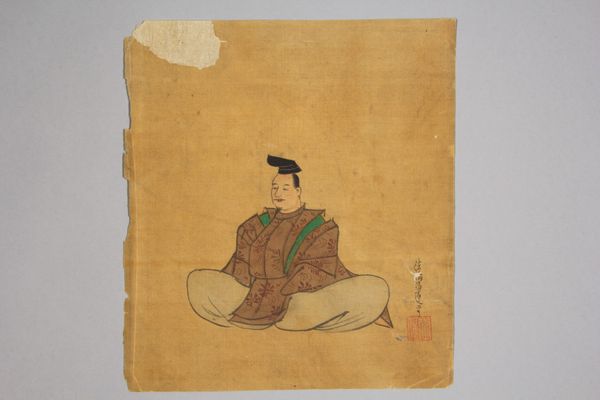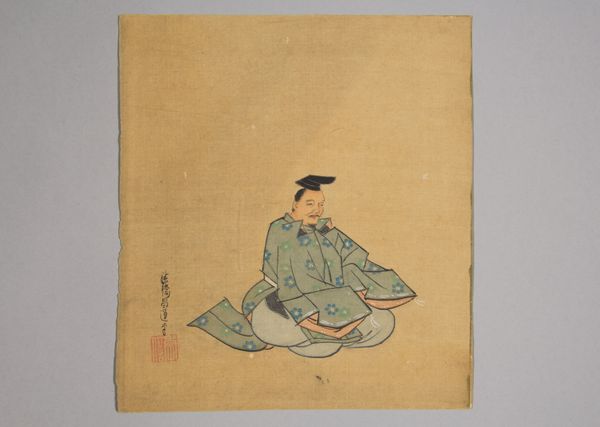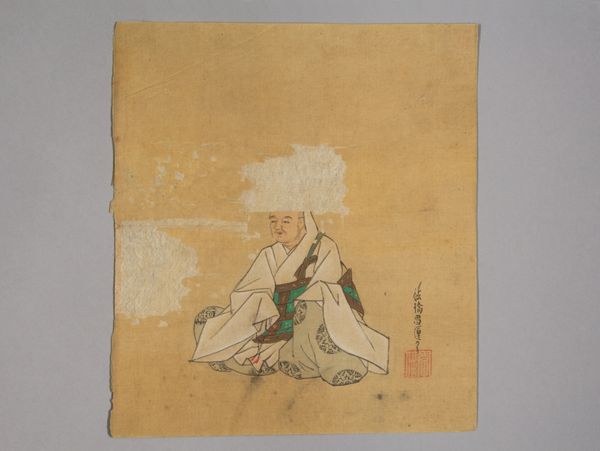
drawing, ink
#
portrait
#
drawing
#
asian-art
#
figuration
#
ink
#
coloured pencil
Dimensions: 7 1/4 × 6 1/2 in. (18.4 × 16.5 cm)
Copyright: Public Domain
Editor: Here we have "Immortal Poet," a 17th-century ink drawing by Kano Shōun at the Met. The drawing's aged paper gives the subject, who sits in quiet contemplation, a sense of serene remove. What strikes you about this work? Curator: What grabs me immediately is the directness of the materials. It’s ink on paper, seemingly simple, yet that simplicity masks a whole world of process. Consider the labor: preparing the ink, the paper making – likely a communal endeavor involving specific crafts and skills. What kind of social dynamics are embedded in the production of such materials? Editor: That's a fascinating angle. I hadn't considered the social implications of material production in this piece. Curator: Exactly! The labor that goes into creating the tools and surfaces is easily overlooked. We often separate "high art" like drawing from "craft," but this divide obscures the real conditions of artistic production. Even the paper’s imperfections and aging tell a story of materiality and time. Is this inherent beauty a social statement? How were such images originally intended to function? Editor: So you're suggesting that focusing on the material base of art helps to democratize our understanding of it? Curator: Precisely. By acknowledging the material conditions, including the human effort behind them, we break down the romanticized notion of the lone artist. Editor: I see. It makes me consider artmaking as less about individual genius and more about a collective contribution. Thank you; this new perspective highlights not only the aesthetic aspects, but also the unseen laborers who enable the creation and longevity of pieces like "Immortal Poet." Curator: Indeed, that is the beauty of materialist approach: art opens up as an interconnected web of skill, labour, and societal resources.
Comments
No comments
Be the first to comment and join the conversation on the ultimate creative platform.
